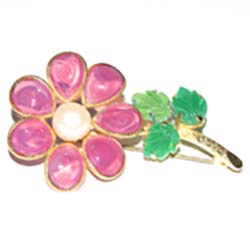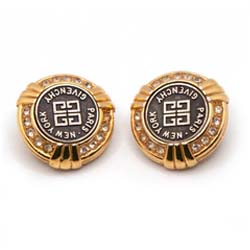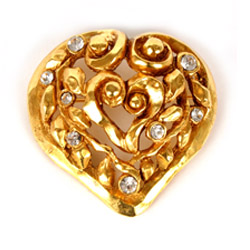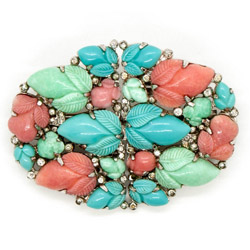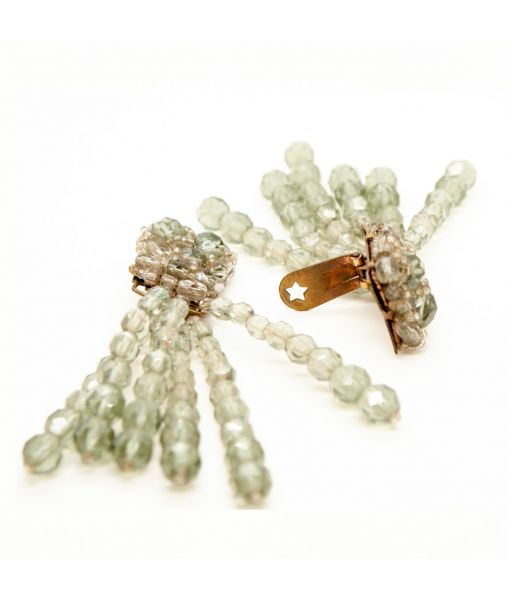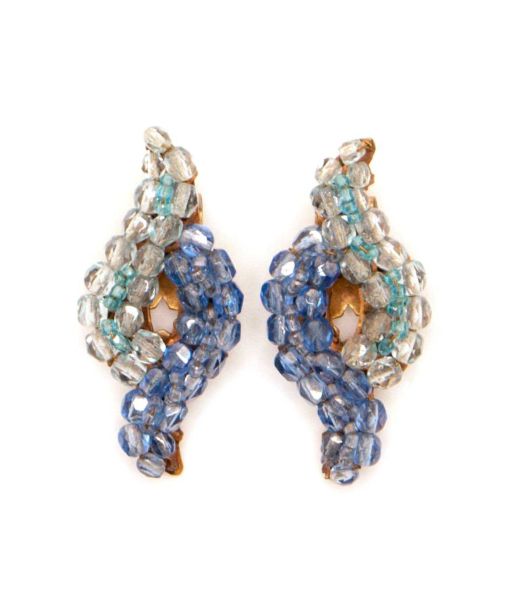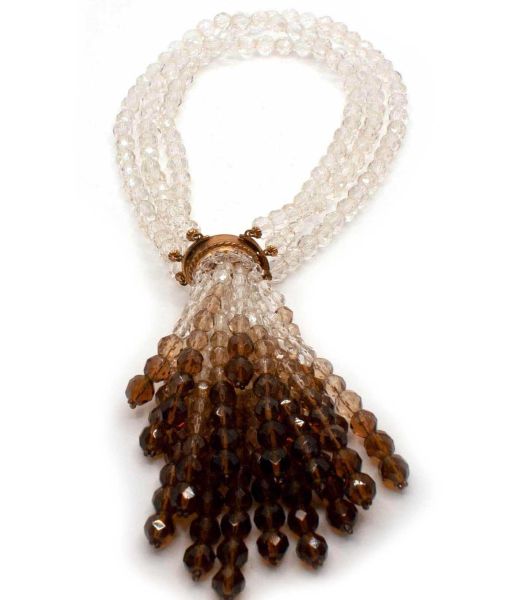How to Date Coppola e Toppo Jewellery
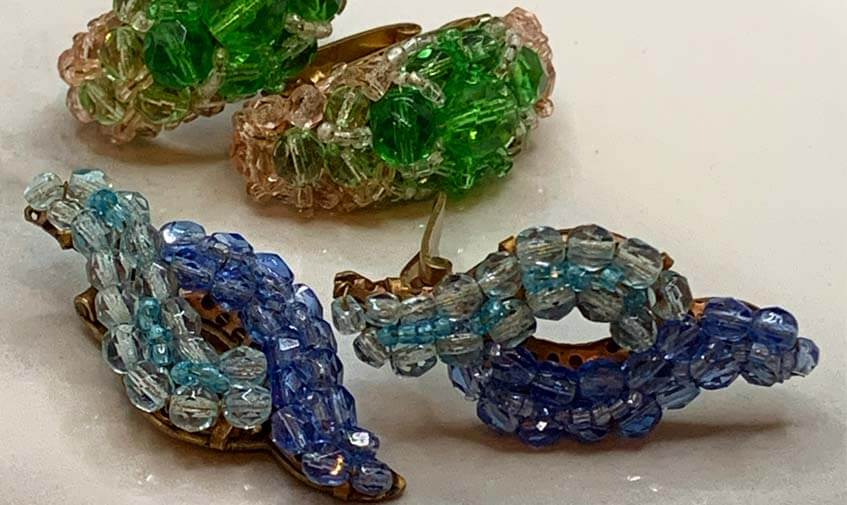
When investing in a piece of vintage costume jewellery it pays to know as much about the origins of the items as possible. Being familiar with the signatures employed by the designer and sometimes those used by forgers can help you identify the real deal rather than going home with a fake.
Coppola e Toppo hallmarked their jewellery in multiple ways over the decades although it isn’t possible to date the pieces exactly by the hallmarks alone because the metal elements on which the signatures were stamped were sometimes used on later pieces if they suited the design. It’s best therefore to deduce an estimated date based on the signature AND the style of the piece in conjunction.
Please note that any dates listed below are estimates and were based on the research available to me.
The Signatures and Marks
Unsigned:
(1946 – 1949) The Italian company scored an advertising coup when a collection of their pieces was featured in French Vogue in 1949. It’s known that those pieces were unsigned therefore it’s most likely that the first items produced by Coppola e Toppo were unsigned.
It’s also important to know that some pieces were also left unsigned in later years if there wasn’t a large enough piece of metal available on which to stamp a signature.
MIKY:
(1949/1950) This is first stamp that appeared on jewellery designed by Coppola e Toppo. It’s said that Miky was the name of Lyda’s childhood pet dog. A Coppola e Toppo piece stamped with 'Miky' appeared in an article for American Vogue in November 1949.
CT:
(1950) Italicized and stamped into the metal. Most likely in use directly after ‘Miky’ but before ‘Made in Italy by Coppola e Toppo’. Can also be found as ‘CT Made Italy’ on pieces that were bound for foreign markets.
MADE IN ITALY BY Coppola e Toppo:
(1951 - 1960) This is the signature that I’ve come across most often. It’s noted in the book “Fashion Jewels by Coppola e Toppo” that a necklace with this signature appeared on the May cover of French Vogue in 1951. The company name was always in script.
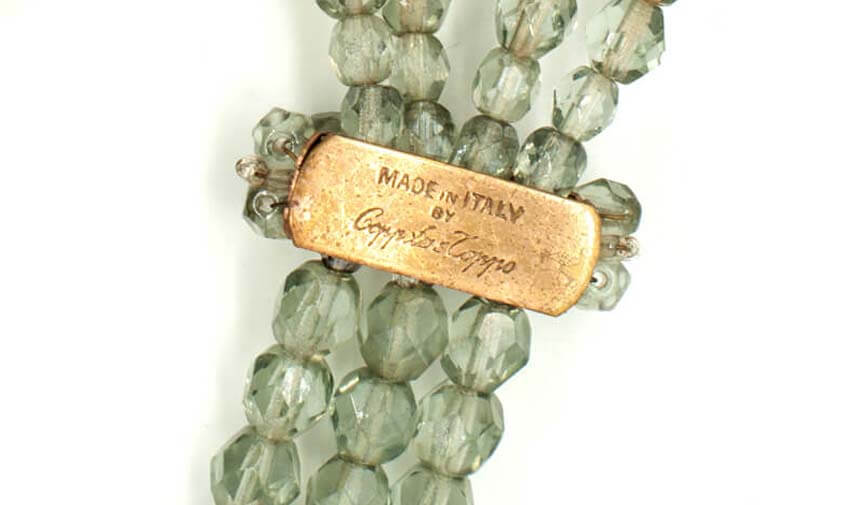
CET:
(1951 – 1960) Most likely stamped on pieces destined for the Italian Market.
MADE ITALY:
(1950): Stamped on jewellery that was to be distributed in markets outside the Italian domestic market.
MADE IN ITALY:
(1951): For the foreign markets, likely a correction of the earlier ‘Made Italy’ stamp.
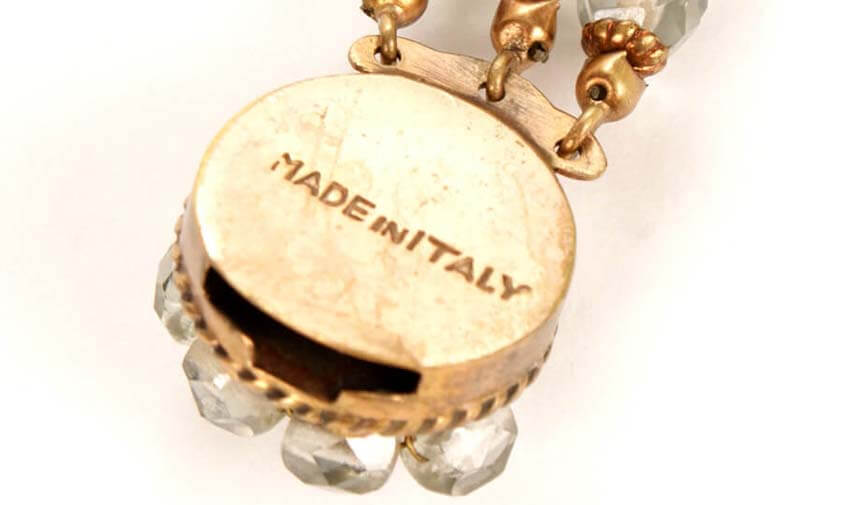
MADE ITALY CeT:
(1950) Most likely stamped on pieces destined for foreign markets.
MADE IN ITALY CET:
(1951 - 1960) Most likely stamped on pieces destined for foreign markets. Probably a grammatical correction of the earlier ‘Made Italy’ mark.
COPPOLA TOPPO:
(1960s) Stamped in script on most pieces made after 1960.
Coppola Toppo engraved on oval plaques:
Caution! This signature was often used on items that were not in fact produced by Coppola e Toppo. The same signature has also been found on gilded cardboard tags.
Have a look through the companion article to get a better idea of how these fabulous pieces of Coppola e Toppo jewellery were constructed. Coppola e Toppo was best known for the faceted glass beads that adorned many of their pieces in the 1950s but plastic beads were introduced in the 1960s to help make larger items lighter. From 1967 onwards different elements like tubular glass beads and wooden elements were introduced.
It seems a safe assumption that if you have a piece stamped ‘Coppola Toppo’ it was made after 1960. If you have a piece stamped with any of the other signatures, then it was most likely made prior to 1960. If you have a ‘Miky’, it’s super rare so hold on to it!

